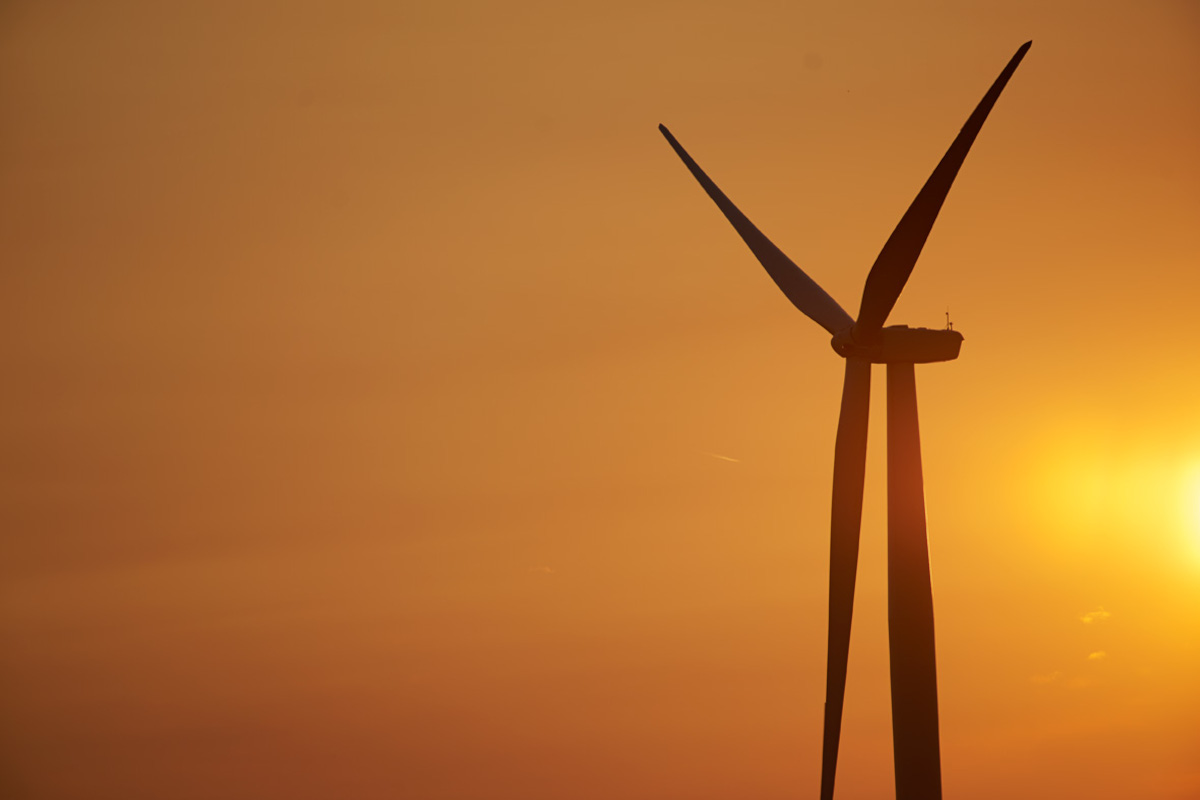
A new independent report commissioned by the Scottish Government and offshore wind industry – and led by Strathclyde University’s Professor Sir Jim McDonald – has set out “five recommendations to transform how Scottish companies secure work in offshore wind”.
The independent Strategic Investment Assessment (SIA) report was commissioned by the Scottish Offshore Wind Energy Council, an industry-government group.
The report’s five main recommendations are:
- The offshore wind sector’s priority must be the establishment of a collaboration framework focused on building confidence amongst Scottish ports, so that required investment is brought forward in time. The immediate priority of such a collaborative framework is supporting the creation of a Scottish Floating Offshore Wind Port Cluster
- Support Scottish suppliers and get them ready to bid for and win work
- Celebrate and sell Scottish success
- Plan for future growth and the next generation of innovations
- Plan for energy transition and a future of far-from-shore, mixed-use energy projects.
The SIA recommends a focus on bringing the manufacture of floating offshore wind platforms to Scotland through creation of a Scottish Floating Offshore Wind Port Cluster, with ports acting in partnership to provide the required infrastructure area and capability needed to attract manufacturers to use Scottish ports and invest in Scotland.
It highlights a low-regret option to invest in an additional 22 hectares of port capacity suitable for offshore wind platform fabrication that could deliver £1.5 billion in economic benefit to Scotland. This initial investment could help underpin longer-term growth in port space, and further investment in port capacity could grow this figure to £4.5 billion.
To help ports invest so they are ready to support projects coming out of the current ScotWind Leasing round run by Crown Estate Scotland, a new partnership approach will be needed. Industry must learn from sectors like oil and gas and develop a collaborative framework that can make explicit the expected future requirements of the offshore wind sector. The Scottish and UK Governments must also help prime early investment to build world-class port facilities.
The SIA also identifies Scottish subsea engineering companies as a priority group well suited to offshore wind, and sets out a range of actions needed to help them better engage with and win work from top tier offshore wind companies.
Offshore wind is a major economic opportunity for Scotland. Scottish projects installed between today and 2027 may produce a total lifetime spend of £18.8 billion, resulting in an average of 1,900 direct jobs per year during construction and 1,100 jobs per year during 25-30 years of operations.
The forthcoming ScotWind leasing round could create 5,000 jobs per year during construction and 2,800 jobs per year during 25-30 years of operations, with total Scottish jobs peaking at 6,000 in 2032/33.
The report makes clear that Scotland needs to prioritise efforts to grow the economic value retained in Scotland. Each additional 1% in Scottish content secured from ScotWind projects can deliver an additional 6,400 FTE employment years for Scotland.
The independent report lead, Professor Sir Jim McDonald, said:
“Scotland is a leader in climate action as well as in low-carbon technology, research and innovation, with a commitment to a just energy transition. Scotland will be one of the first countries in the world looking to deliver floating offshore wind at scale. If Scottish companies are involved in this first generation of floating offshore wind projects, then they will be in a position to sell this expertise around the world.
“However, winning this opportunity will need collective effort and determination. Scottish Ministers and industry leaders must clearly understand and provide the level of commitment and action needed, and create the opportunity to forge an effective partnership if we are to grow Scottish success.”
Net Zero and Energy Secretary Michael Matheson said:
“The offshore wind sector has a vital role to play in decarbonising our energy system and ensuring we become a net-zero economy by 2045.
“With a pipeline of new projects set to be provided by the first cycle of ScotWind Leasing, the Scottish Government committed to setting out this Strategic Investment Assessment within our first 100 Days of Government as we seek to better support the offshore wind supply chain and create further good, green jobs as we deliver a just transition to net zero.
“I am grateful to Professor Sir Jim McDonald and his team for delivering the report, which sets out a clear path of the steps we must take to seize the economic opportunity this presents for Scotland. With COP26 in Glasgow approaching, this is an ideal opportunity to demonstrate the action we are taking on renewable energy and I look forward to continuing to engage with SOWEC as they take forward delivery of the recommendations.”
SOWEC industry co-chair Brian McFarlane said:
“SOWEC welcomes this important report and the clear priorities it sets for action. The report rightly points out that action is needed before the end of 2021 so that when the next generation of projects emerges from the ScotWind leasing round, Scotland is properly organised to secure work from this pipeline.”
Jonathan Cole, Offshore Managing Director of Iberdrola Renewables and a member of the SIA Executive Committee, said:
“Scotland is the windiest country in Europe, with the biggest and most experienced offshore sector and supply chain, so we’re perfectly placed to create a new floating offshore industry that supports the energy transition and leaves no one behind – people, businesses, communities.
“Today’s report sets out the strategic framework for ensuring we can reap the benefits of that throughout the supply chain and across the country. With just over ten weeks until COP26 gets underway on our doorstep, we need to embrace the collective drive and determination of the Scottish offshore wind industry to make that happen and ensure we can all enjoy a better future, quicker.”
Jim Smith, Managing Director of SSE Renewables and a member of the SIA Executive Committee, said:
“This is a significant report coming at a vital time as Scotland accelerates its drive towards net-zero. Offshore wind will play a critical role in powering that drive, which is why the capability and commitments of developers to deliver on Scotland’s ambitions of securing 10GW of new offshore wind energy under ScotWind is critical.
“As important is the ability of industry and government to collaborate to create the investment environment that allows Scotland’s supply chain, including our ports, to capitalise on the opportunities. SOWEC’s report highlights the crucial steps that are rapidly needed so that the Scottish supply chain can successfully secure high-value contracts from the next round of new offshore wind projects.”
Andy McDonald, Head of Low Carbon Transition at Scottish Enterprise and a member of the SIA Executive Committee, said:
“I welcome this report that clearly sets out areas of opportunity for Scotland’s offshore wind sector in developing the supply chain and securing future work. The collaborative approach will help Scotland seize opportunities and build on assets, from port infrastructure, to technical talent, and networks, to ensure we lead the way in offshore wind and wider energy transition.
“Not only that, but an industry-led Scottish Floating Offshore Wind Port Cluster, with ports acting in partnership, will also provide a clear path for investment in Scotland that will be important as we host COP26 in a matter of months and show the world Scottish capability in offshore wind expertise.”
Andrew Jamieson, Chief Executive of the Offshore Renewable Energy Catapult, said:
“Collaborative investment in Scottish infrastructure is vital to seizing the opportunity presented by floating offshore wind and establishing a world-leading industry and supply chain here in Scotland.
“It will provide opportunity for our innovative SMEs and companies transitioning into renewables from oil and gas and other industries and lead to long-term, sustainable value in terms of Scottish jobs and economic growth.”
Claire Mack, Chief Executive of Scottish Renewables said:
“This new report sets a welcome challenge to the renewables industry and Government to deliver a major green industrial expansion for Scotland.
“We will soon be leasing the largest area of seabed anywhere in the world for floating wind development, and combining this with the existing expertise of our offshore supply chain will be a winning combination if we truly collaborate and invest strategically.
“As the spotlight turns to Scotland later this year for COP26 I hope a Scottish Floating Offshore Wind Port Cluster will help to signal our global ambition to deliver net-zero technology both at home and around the world.”
Colin Maciver, Senior Development Manager at Crown Estate Scotland, said:
“Through the development of ScotWind Leasing we know that there is a huge interest from developers hoping for the chance to build Scotland’s next generation of offshore wind farms, and we also know that the development of Scotland’s port infrastructure is a key part of unlocking the economic potential that this can bring to Scottish communities.
“This report aligns with our efforts to ensure ScotWind applicants engage with their potential supply chain at an early stage through the Supply Chain Development Statement element of their applications, and highlights the type of cross-sector collaboration that will be needed over the coming years to make sure Scotland is making the most of the opportunity that ScotWind is set to deliver.”
Dan McGrail, Chief Executive of RenewableUK, said:
“This landmark report highlights the enormous scale of the economic and industrial opportunity that floating wind offers to Scotland. Manufacturing massive floating offshore wind platforms, cables and towers in revitalised Scottish ports would create tens of thousands of highly skilled jobs and attract billions in investment in new supply chains.
“The actions for Government and industry set out in the report provide a clear blueprint to enable Scotland to seize the advantage right now and take the vital steps needed to become a global leader in this innovative technology.”






